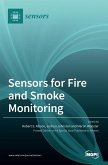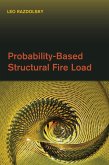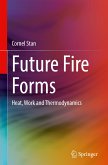- Gebundenes Buch
- Merkliste
- Auf die Merkliste
- Bewerten Bewerten
- Teilen
- Produkt teilen
- Produkterinnerung
- Produkterinnerung
Although combustion, heat transfer and fire suppression depend on fluid mechanics this is typically skated over in introductory books. This handbook covers turbulent flows with combustion, the structure of flames, fire and smoke dynamics, fire and water, interactions with boundaries; plus applications in fire control, and CFD.
Andere Kunden interessierten sich auch für
![Sensors for Fire and Smoke Monitoring Sensors for Fire and Smoke Monitoring]() Sensors for Fire and Smoke Monitoring54,99 €
Sensors for Fire and Smoke Monitoring54,99 €![Computational Fluid Dynamics in Fire Engineering Computational Fluid Dynamics in Fire Engineering]() Guan Heng YeohComputational Fluid Dynamics in Fire Engineering74,99 €
Guan Heng YeohComputational Fluid Dynamics in Fire Engineering74,99 €![Smoke Investigation Smoke Investigation]() Smoke Investigation37,99 €
Smoke Investigation37,99 €![Probability-Based Structural Fire Load Probability-Based Structural Fire Load]() Leo RazdolskyProbability-Based Structural Fire Load135,99 €
Leo RazdolskyProbability-Based Structural Fire Load135,99 €![The Estimation of Exposures, or External Hazards, in Fire Insurance The Estimation of Exposures, or External Hazards, in Fire Insurance]() William Frazier RossThe Estimation of Exposures, or External Hazards, in Fire Insurance27,99 €
William Frazier RossThe Estimation of Exposures, or External Hazards, in Fire Insurance27,99 €![Current Advances on the Assessment and Mitigation of Fire Risk in Buildings and Urban Areas - 1st Edition Current Advances on the Assessment and Mitigation of Fire Risk in Buildings and Urban Areas - 1st Edition]() Current Advances on the Assessment and Mitigation of Fire Risk in Buildings and Urban Areas - 1st Edition94,99 €
Current Advances on the Assessment and Mitigation of Fire Risk in Buildings and Urban Areas - 1st Edition94,99 €![Future Fire Forms Future Fire Forms]() Cornel StanFuture Fire Forms113,99 €
Cornel StanFuture Fire Forms113,99 €-
-
-
Although combustion, heat transfer and fire suppression depend on fluid mechanics this is typically skated over in introductory books. This handbook covers turbulent flows with combustion, the structure of flames, fire and smoke dynamics, fire and water, interactions with boundaries; plus applications in fire control, and CFD.
Produktdetails
- Produktdetails
- Verlag: CRC Press
- 2. Auflage
- Seitenzahl: 356
- Erscheinungstermin: 24. Oktober 2022
- Englisch
- Abmessung: 250mm x 175mm x 24mm
- Gewicht: 794g
- ISBN-13: 9781032068879
- ISBN-10: 1032068876
- Artikelnr.: 64360314
- Herstellerkennzeichnung
- Libri GmbH
- Europaallee 1
- 36244 Bad Hersfeld
- gpsr@libri.de
- Verlag: CRC Press
- 2. Auflage
- Seitenzahl: 356
- Erscheinungstermin: 24. Oktober 2022
- Englisch
- Abmessung: 250mm x 175mm x 24mm
- Gewicht: 794g
- ISBN-13: 9781032068879
- ISBN-10: 1032068876
- Artikelnr.: 64360314
- Herstellerkennzeichnung
- Libri GmbH
- Europaallee 1
- 36244 Bad Hersfeld
- gpsr@libri.de
Prof. Bart Merci obtained his PhD, entitled 'Numerical Simulation and Modelling of Turbulent Combustion', from the Faculty of Engineering at Ghent University in the year 2000. As a post-doctoral fellow of the Fund for Scientific Research - Flanders (FWO-Vlaanderen), he specialized in numerical simulations of turbulent non-premixed combustion, with focus on turbulence-chemistry interaction and turbulence-radiation interaction. He reoriented his research towards fire safety science, taking the fluid mechanics aspects as the central research topic. He became lecturer at Ghent University in 2004, Full Professor in 2012 and Senior Full Professor in 2020. He is the head of the research unit 'Fire Safety Science and Engineering' in the Department of Structural Engineering and Building Materials. Since 2009, Bart Merci has coordinated the 'International Master of Science in Fire Safety Engineering', with Lund University and the University of Edinburgh as partners. He was the President of The Belgian Section of The Combustion Institute from 2009 until 2016. Since 2016, he has been Editor-in-Chief of Fire Safety Journal. He is a member of the Executive Committee of the International Association for Fire Safety Science. He is co-author of more than 150 journal papers. Tarek Beji obtained his Ph.D. degree in 2009 from the University of Ulster (UK) with a thesis entitled 'Theoretical and Experimental Investigation on Soot and Radiation in Fires'. In 2011, he joined Ghent University (UGent) as a post-doctoral researcher and worked on the topic of Fire Forecasting. In 2014, he was awarded an FWO post-doctoral fellowship and performed research on 'Numerical Modelling of Water Sprays in Fire-Driven Flows'. In 2019, Tarek Beji was promoted to Assistant Professor in Fire Dynamics at Ghent University (UGent) in the Department of Structural Engineering and Building Materials where he is consolidating his research activities around the topic of 'Numerical Modelling of Multi-Phase Aspects in Fire-Driven Flows' with a particular interest in liquid sprays, pool fires and soot modelling.
1 Introduction. 2 Turbulent Flows with Chemical Reaction. 3 Turbulent
Flames and Fire Plumes. 4 Smoke Plumes. 5 Fire and Smoke Dynamics in
Enclosures. 6 Driving Forces in Smoke and Heat Control. 7 Impact of Water
on Fire and Smoke Dynamics. 8 Introduction to Fire Modelling in
Computational Fluid Dynamics.
Flames and Fire Plumes. 4 Smoke Plumes. 5 Fire and Smoke Dynamics in
Enclosures. 6 Driving Forces in Smoke and Heat Control. 7 Impact of Water
on Fire and Smoke Dynamics. 8 Introduction to Fire Modelling in
Computational Fluid Dynamics.
1 Introduction. 2 Turbulent Flows with Chemical Reaction. 3 Turbulent
Flames and Fire Plumes. 4 Smoke Plumes. 5 Fire and Smoke Dynamics in
Enclosures. 6 Driving Forces in Smoke and Heat Control. 7 Impact of Water
on Fire and Smoke Dynamics. 8 Introduction to Fire Modelling in
Computational Fluid Dynamics.
Flames and Fire Plumes. 4 Smoke Plumes. 5 Fire and Smoke Dynamics in
Enclosures. 6 Driving Forces in Smoke and Heat Control. 7 Impact of Water
on Fire and Smoke Dynamics. 8 Introduction to Fire Modelling in
Computational Fluid Dynamics.









